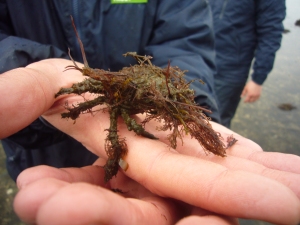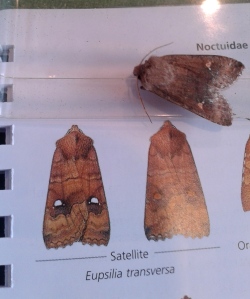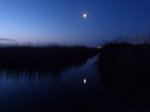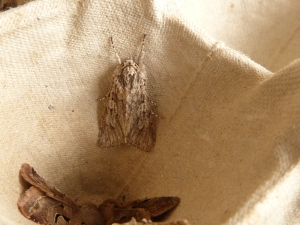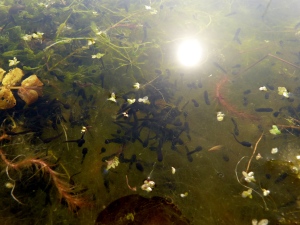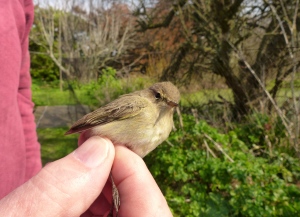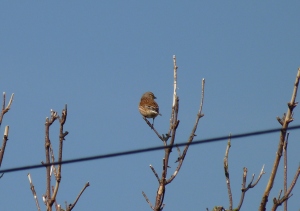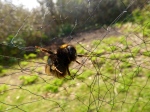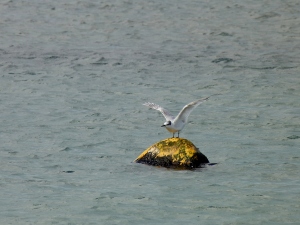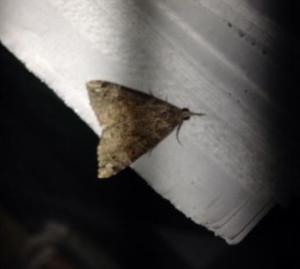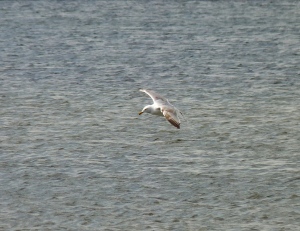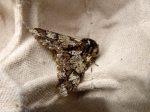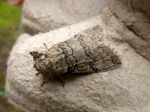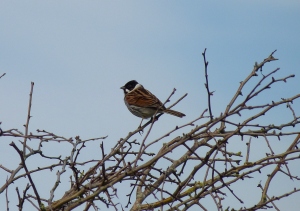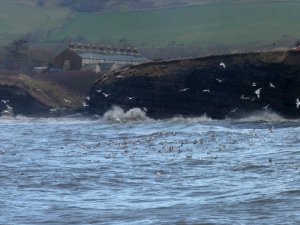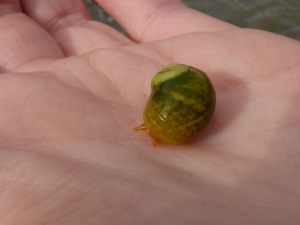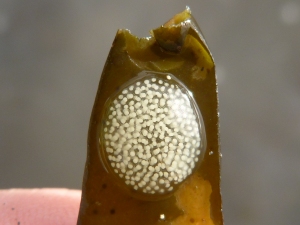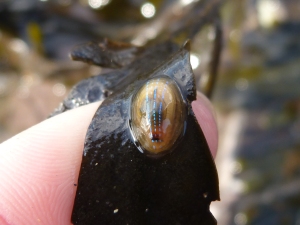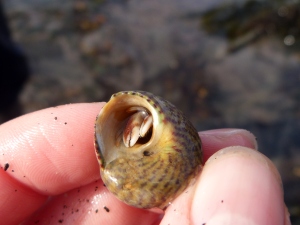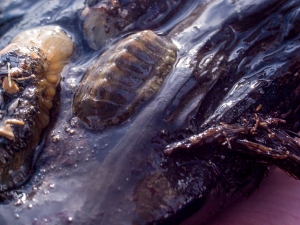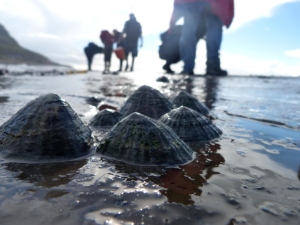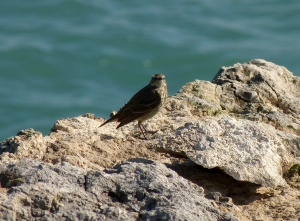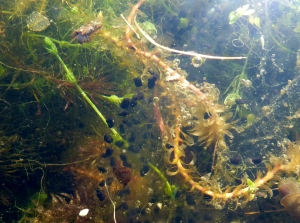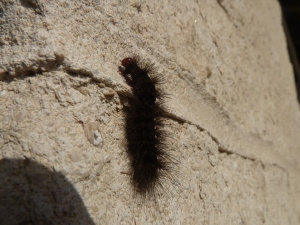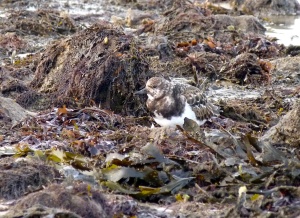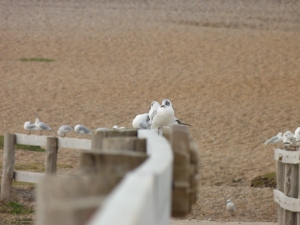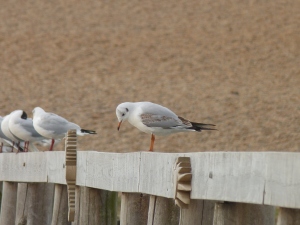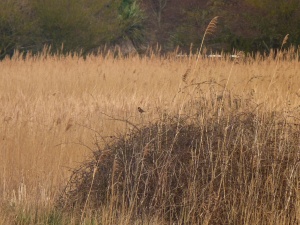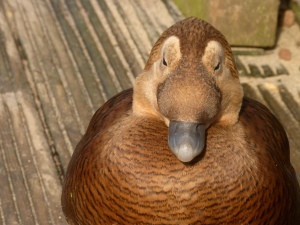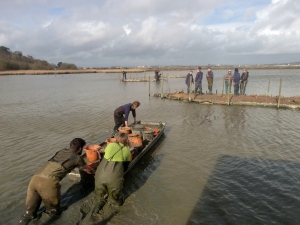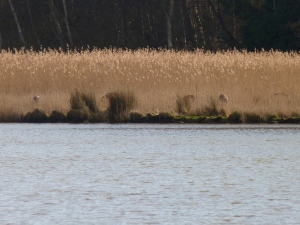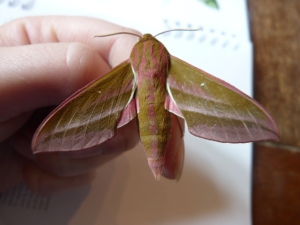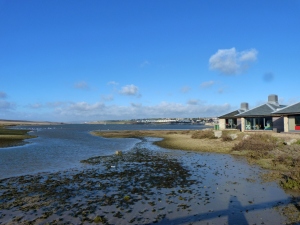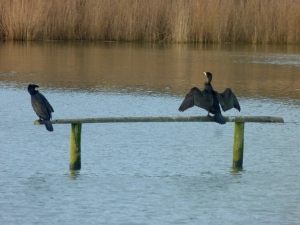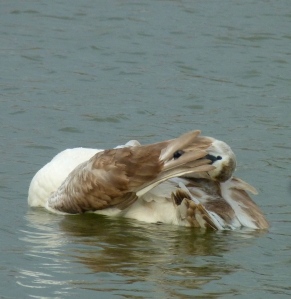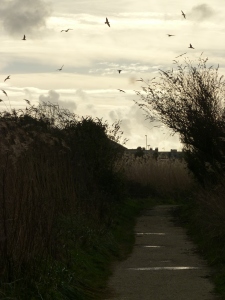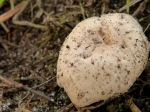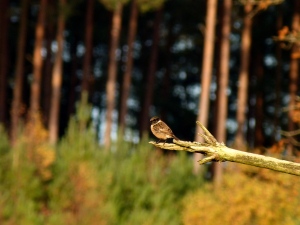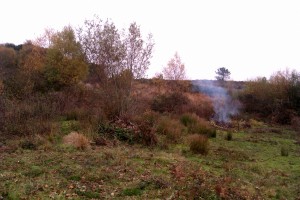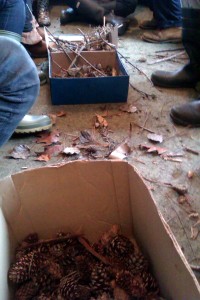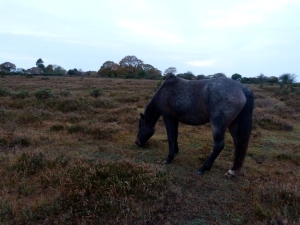Step by Step, Lep by Lep
The title is a little obscure perhaps, but it is reference to the constant learning process that I’m going through, particularly when it comes to the moths whose taxonomic group happens to be Lepidoptera (which also includes butterflies).
This week didn’t start off with moths though, it started off with another topic that I am trying to learn more about: marine species. Marc, the Chesil Beach Centre Officer, led a training session for the volunteers at the centre. We headed out along the shore of the Fleet in time for the low tide and had a good rummage around amongst the rocks and the seaweeds, and wow we found some interesting beasties.
Yup, that’s a crab. This species has neat way of camouflaging itself, it actually has seaweeds and sponges attached to its carapace (shell)! I don’t think that anyone can deny that it’s not effective … though then again, a keen-eyed volunteer did spot this individual.
Ah, now that’s a crab that we’re more used to seeing. A common species in rockpools, this is the shore crab, distinguishable by the five wavy bits on the front bit of its carapace (shell). Apparently.
In the photo above, Marc is holding up something that is very commonly found on our shores, known as a mermaid’s purse. These purses are super cool because they’re actually the eggcases of some species of sharks, rays and skates! So similar to how a bird’s chick develops within an egg, as do the sharks, rays and skates. I do believe that the one he is holding there belongs to a small-spotted catshark (also known as the lesser spotted dogfish).
That night saw my first moth trapping on Portland, although only for a few evening hours. Despite the limited time, I still caught a decent number. Just a couple of moths is a good amount for a beginner to be identifying. I did manage a few of them, but struggled with a couple – the Pug (a group that are notoriously difficult, though mine was an easier one) and the micro-moth (since I don’t have an ID book for micros, yet).
Moths trapped: x1 Early Thorn, x1 Early Grey, x1 Double-Striped Pug, x2 Light Brown Apple Moth (a micro).
Later in the week, I delved further into the moth nerdiness, when I attended a 2 ½ hour long ID workshop. It was far more interesting than it sounds, and I learnt so much. Hopefully some of it will actually remain in my head, but it should help with if I do catch any of the species we covered.
I think one of my favourites covered was the Waved Umber, just look at that patterning!
Another example one that was intriguing was the Satellite moth, with its rich red-brown colouration and spots. In the ID book, the three spots are either all white or all red-orange. However I noticed that the example we were looking at had two white spots and one red-orange. Yet another mystery in the world of moths.
Further Lepidoptera (moths/butterflies) fun occurred on Sunday when I travelled across to Southampton for the International Butterfly Symposium. This conference was actually three days long, but unfortunately could only afford Sunday’s half day session. Money may not make someone happy usually, but it could definitely make me more learned and educated. In my world this equates to greater happiness as it means books, symposia and training courses.
Anyway, back to the symposia. There’s some really interesting research being done, plenty of field-based conservation and laboratory observations. One that definitely caught my attention was the work of a Canadian researcher, Raynald H. Lemelin, who is studying human perceptions of insects. I was so engrossed that I even asked a question (albeit with a shaky voice as I realised that almost everyone was looking at me)!

A good example of an insect that people often have opinions on! However, this isn’t actually a bee or wasp, it’s a hoverfly! ID by Sean Foote.
With my role in community engagement (and previous experience with the Field Studies Council), I view at least part of my job as (1) increasing awareness of different creatures and (2) improving peoples’ perceptions of animals that they might otherwise be indifferent to or even dislike.
The best bit of this is that the animals involved are pretty damn amazing, even the simplest or most common is just splendid. The ecology of worms, the behaviour of moths, or the complexity of bird anatomy … each of these is an example of how remarkable nature can be, without us even noticing much of the time!
Even in this blog post, I’ve only touched on a couple of species but each one has a fascinating life cycle, anatomy and behaviour. What do you think?
If you’re very interested in the moths that I’ve been seeing, I have made a Dorset Moths List page of all the moths I’ve encountered since I moved to Dorset.

